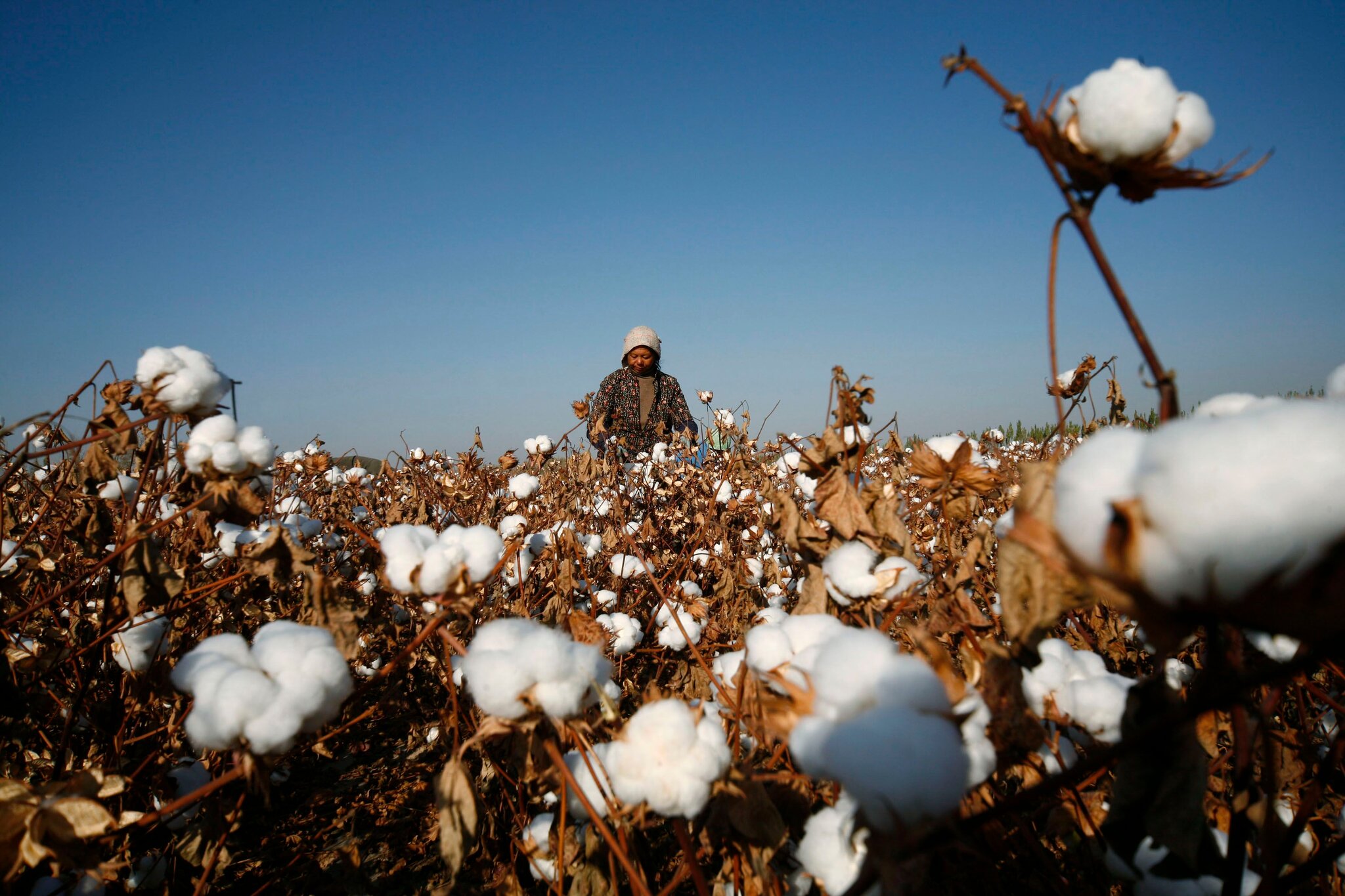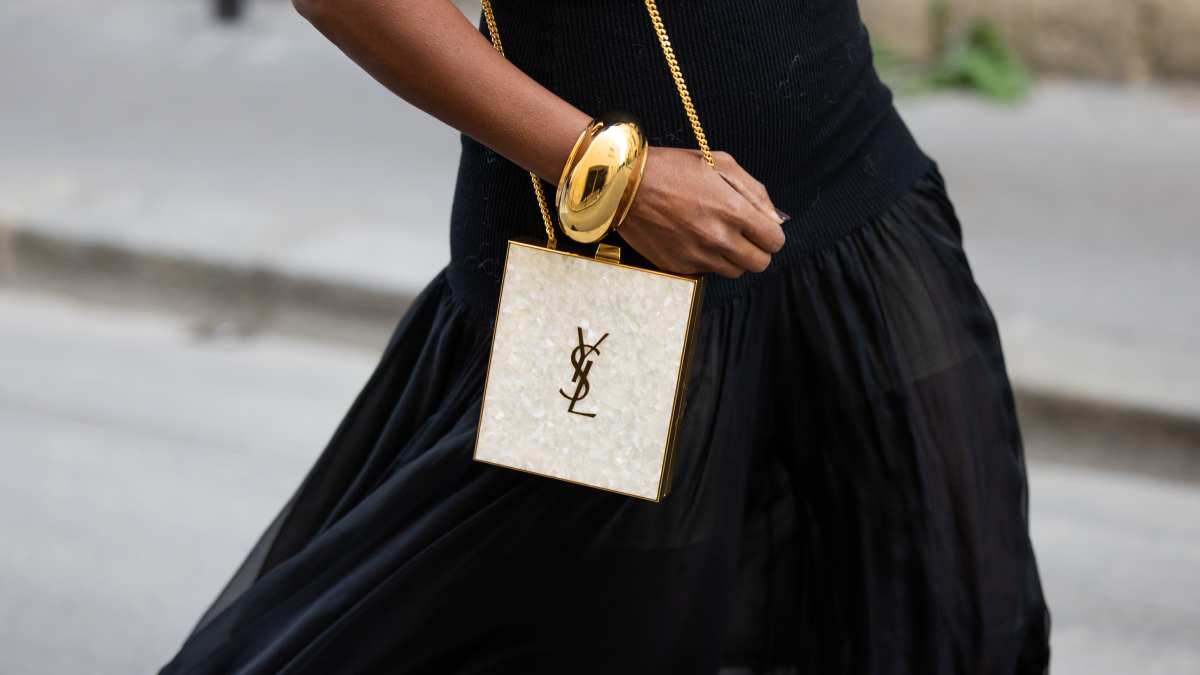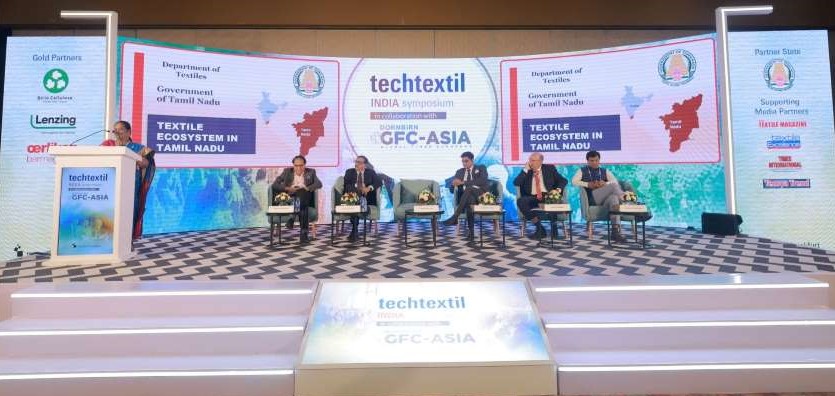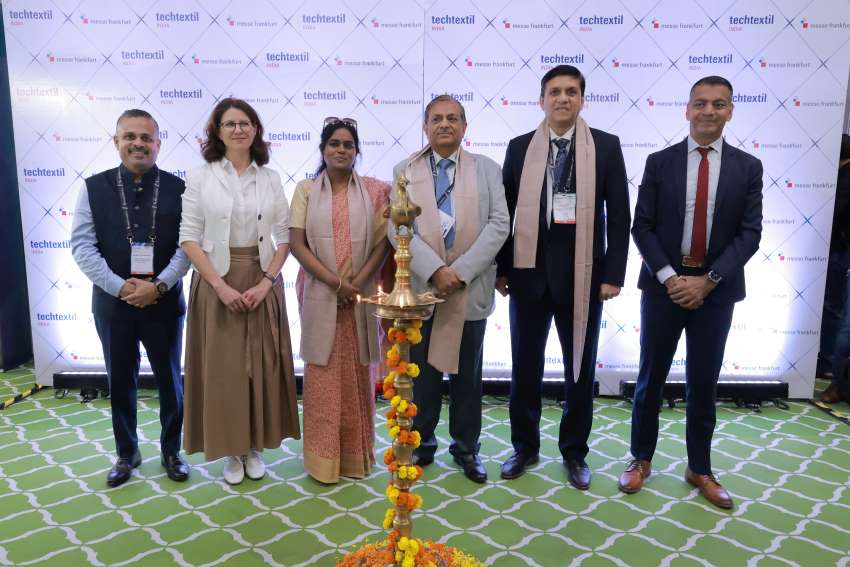FW
The Vietnamese clothing retail market demonstrated continued resilience and growth during the first ten months of 2025.
Retail sales of clothing increased by 8.6 per cent Y-o-Y during the January-October 2025 period. This growth rate is generally viewed positively, indicating stable consumer demand for apparel and textile products within the domestic Vietnamese market.
This apparel growth occurred within the context of the overall retail market performance. The total retail sales of goods and services in Vietnam for the same January-October 2025 period typically shows a higher growth figure, often in the double digits, suggesting that while clothing sales are robust, they are sometimes outpaced by other consumer goods sectors.
The consistent growth in clothing retail sales is usually supported by several factors including an expanding middle-income population with higher disposable income, increased concentration of consumers in major cities with access to diverse retail channels and international tourism, particularly in major hubs like Hanoi and Ho Chi Minh City.
While Vietnam is predominantly known as a global textile manufacturing and export hub, the growth in domestic retail sales is important because it helps diversify revenue streams for local producers, making them less reliant solely on international orders. It encourages the development of stronger local apparel brands and retail networks.
The 8.6 per cent growth confirms the domestic market remains a healthy and reliable source of demand for the nation's massive textile and garment industry.
Scheduled in Singapore from November 19-21, 2025, The Asia-Pacific Textile and Apparel Supply Chain Expo & Summit (APTEXPO 2025) will showcase solutions from over 100 exhibitors across seven countries in areas like sustainable materials, digitalization, and logistics.
Jointly organized by MP Singapore Pte Ltd and CCPIT TEX, and hosted by the Singapore Fashion Council (SFC), the event will focus on building resilient, adaptive, and sustainable supply chains.
The theme, ‘Re-engineering towards a Resilient, Adaptive and Sustainable Supply Chain,’ reflects the sector’s critical need to adopt digitalization, fair trade practices, circular economy models, and sustainable innovation. The event aims to be a vital hub where global stakeholders can share strategies, forge crucial partnerships, and collectively shape the future of textile manufacturing and trade. The event enjoys robust support from key associations across the ASEAN bloc, including groups from Indonesia, Malaysia, Vietnam, and Thailand.
APTEXPO 2025 will directly address current challenges and emerging opportunities, emphasizing industrial upgrading and the evolving international trade landscape, including discussions on decentralized manufacturing to enhance security and efficiency.
The event will feature a dynamic line-up of activities including the APTEXPO Summit that will host over 300 senior delegates from leading global brands and retailers. Further enriching the experience are six specialized concurrent events. Highlights include the Asia-Pacific Sports & Outdoor Fashion Forum, focusing on performance textiles and functional apparel, and the 7th Belt and Road Textile Conference to advance regional cooperation. Curated business matching sessions will also connect suppliers, buyers, and innovators to facilitate cross-border collaboration and network expansion.
British lingerie and loungewear label, Peachaus has successfully secured investment from Paul Mason, Former CEO, Matalan. The funding is typically characterized as a private investment intended to support the brand's growth and expansion plans.
The primary value of this investment lies not just in the capital, but in the strategic retail expertise that Paul Mason brings. His background running large, successful national retail chains like Matalan will be invaluable as Peachaus seeks to scale its operations and potentially move beyond its current DTC model.
Peachaus is expected to use the funds to accelerate key areas of its business, which likely includes expanding its line of sustainable lingerie and loungewear, increasing brand awareness and customer acquisition, likely targeting wider global markets and improving supply chain and e-commerce infrastructure to handle higher volumes.
Peachaus is known for its focus on comfort, sustainability, and inclusivity, positioning it uniquely in the premium segment of the intimate apparel market. Mason's investment validates the brand's model and market potential.
Arvind Ltd’s performance in Q2, FY26 ended September 2025 showed positive growth across its key revenue metric.
The company successfully increased its consolidated revenue from operations by 8 per cent Y-o-Y to $267.4 million for the quarter. This growth signals continued strength and recovery in its core textile and apparel businesses, which include segments like denim, wovens, and garments.
The increase in revenue indicates that the company is effectively capturing market demand and benefiting from its operational strategies during the period.
A worldwide leader in industrial machine needles, precision components, and textile system solutions, Groz-Beckert is set to participate in Techtextil India 2025. The event will be held from November 19–21, 2025, at the Bombay Exhibition Center in Mumbai.
The company plans to showcase innovations across four primary product areas including Nonwovens, Weaving, Warp Knitting, and Sewing with a specific focus on processing technical textiles and other high-performance materials.
At Techtextil India, Groz-Beckert will emphasize its wear-optimized solutions for nonwoven production. These technologies are engineered to boost process stability, improve material consistency, and decrease operational downtime.
Key nonwoven technologies on display include Felting Needles with Enhanced Barb Geometry, These latest barb designs are optimized for abrasive and mineral fiber blends, ensuring reduced needle wear, a lower tendency for clogging in materials like bentonite and a more uniform surface appearance even at high throughput rates.
Featuring SiroLock plus worker and doffer wires, the InLine Card Clothing Solutions: solutions offer improved fiber control and web uniformity, extended service life and maintenance intervals and higher and reproducible carding quality throughout production runs.
These advanced nonwoven solutions support demanding industries such as automotive interiors, geotextiles, filtration, hygiene, and insulation materials.

When India’s Ministry of Textiles unveiled its four-point action plan recently, it wasn’t just another policy announcement it was a blueprint for an industry at a crossroads. With textile and apparel exports stagnating at $37.7 billion in FY2024-25, the government’s ambition to nearly triple it to $100 billion by 2030 signals a decisive move to reclaim India’s historical dominance in global fabrics and fashion trade.
The Blueprint: Three horizons, one vision
The Ministry’s roadmap divides reforms across three temporal horizons: short-term (two years), medium-term (five years), and long-term (beyond 2030), to tackle structural bottlenecks that have kept Indian textiles less competitive than China, Bangladesh, or Vietnam.
Table: India’s textile action blueprint (2025-30)
|
Phase |
Duration |
Focus |
Core targets |
|
Short-term |
FY25-FY27 |
Cost rationalization & infrastructure optimization |
Reduce logistics cost from 11% to 8% of export value |
|
Medium-term |
FY27-FY30 |
Labour productivity & technology infusion |
30% jump in worker efficiency, 50% rise in automated processes |
|
Long-term |
Post-FY30 |
Brand India & value-chain repositioning |
Move 40% of exports to high-value categories (technical textiles, fashion apparel) |
Cost Rationalization: Stitching efficiency into the supply chain
The first pillar of reform centers on production cost optimization. Textile clusters in Surat, Tirupur, and Panipat face cost structures 15-20 per cent higher than Asian peers due to fragmented logistics and outdated energy systems. The government plans to:
• Integrate 20 textile parks under the PM MITRA initiative with digital logistics corridors.
• Offer interest subvention for green power adoption in dyeing and spinning units.
• Establish common effluent treatment facilities (CETPs) to reduce compliance overheads.
The government’s three-phase plan lays out a sequenced reform blueprint. In the short term, India is focused on reducing operational costs mainly through supply chain integration and logistics efficiency. The medium-term goal turns inward to labour and technology, focusing on boosting worker productivity and automation to make Indian factories more globally competitive. The long-term vision shifts from volume to value repositioning India’s export profile toward premium categories like technical textiles, performance wear, and fashion apparel, which yield higher margins and global brand recognition.
Table: Cost competitiveness (2025 baseline)
|
Country |
Average Export Cost per kg ($) |
Logistics Cost % of Export Value |
Power Tariff (kWh) |
|
India |
$2.20 |
11% |
9.5 |
|
Bangladesh |
$1.95 |
8% |
8.2 |
|
Vietnam |
$2.10 |
7% |
8.8 |
|
China |
$2.30 |
6% |
7.9 |
Source: Ministry of Textiles, Industry Estimates, 2025
This comparison exposes India’s structural cost disadvantage within Asia. Indian textile exporters spend more on logistics and energy both key input costs. Logistics alone consumes 11 per cent of export value, compared to 7-8 per cent in Vietnam and Bangladesh. Similarly, power tariffs remain among the region’s highest. This explains why India’s textile margins are squeezed despite cheaper labour. If the short-term cost rationalization plan (like integrated parks and green energy incentives) succeeds, India could narrow this 15-20 per cent cost gap by FY2027, making its exports far more competitive in global markets.
Workforce and automation, the loom of the future
In the medium term, the plan targets labour productivity an area where India lags significantly. According to a Deloitte-Textile Federation report, Bangladesh’s apparel worker produces 25 per cent more garments per shift than an Indian worker, largely due to better line balancing and digital workflow systems.
Key measures:
• A Skill Acceleration Mission to upskill two million workers in lean manufacturing and technical textile operations.
• 50 per cent capital subsidy for adopting digital cutting and stitching equipment.
• Expansion of AI-driven quality control systems under the Samarth 2.0 program.
Table: Productivity benchmarking (2025)
|
Country |
Garment units per worker per shift |
Automation level (%) |
Target automation level (%) (2030) |
|
India |
40 |
28 |
60 |
|
Bangladesh |
50 |
35 |
50 |
|
Vietnam |
55 |
45 |
70 |
|
China |
65 |
60 |
80 |
India’s apparel workforce currently lags behind Asian peers in both manual output and automation adoption. An average Indian worker produces 40 garments per shift which is, 20-30 per cent less than counterparts in Bangladesh or Vietnam. Automation is another weak link: only 28 per cent of production lines use automated or semi-automated systems, versus 60 per cent in China. The government’s medium-term aim is to raise automation to 60 per cent by 2030, effectively doubling current levels and boosting worker output by at least 50 per cent. The strategy blends digital adoption with human skill enhancement targeting AI-assisted stitching, digital cutting, and lean line balancing to lift overall productivity and global reliability. The goal now is to close the productivity gap by 2030 while retaining India’s cost advantage.
Export Competitiveness: Building brand India textiles
The long-term horizon looks beyond cost to brand equity. The ministry aims to shift 40 per cent of exports from basic yarn and fabrics to high-value apparel and technical textiles, aligning with global sustainability and traceability standards.
Initiatives under discussion: Launch of Fabric of India export branding program akin to Make in India; mandatory traceability QR codes for exports to the EU under the new carbon border adjustment mechanism; Textile Innovation Fund to support 200 startups in bio-based fibres and circular fashion.
The road to 2030
The Textile Ministry’s strategy is more than a reform agenda it’s a manufacturing reset. The short-term cost cuts, medium-term skill pushes, and long-term brand repositioning combine into a coherent growth map. But execution remains key. As one senior textile exporter from Tirupur notes, “Blueprints don’t make exports—ecosystems do.”
The crux is that India’s textile industry, once the fabric of global trade, is attempting to rewrite its story with data-driven precision. The four-point action plan is not merely about hitting export numbers it’s about restoring India’s reputation as the world’s textile powerhouse, one stitch of competitiveness at a time.
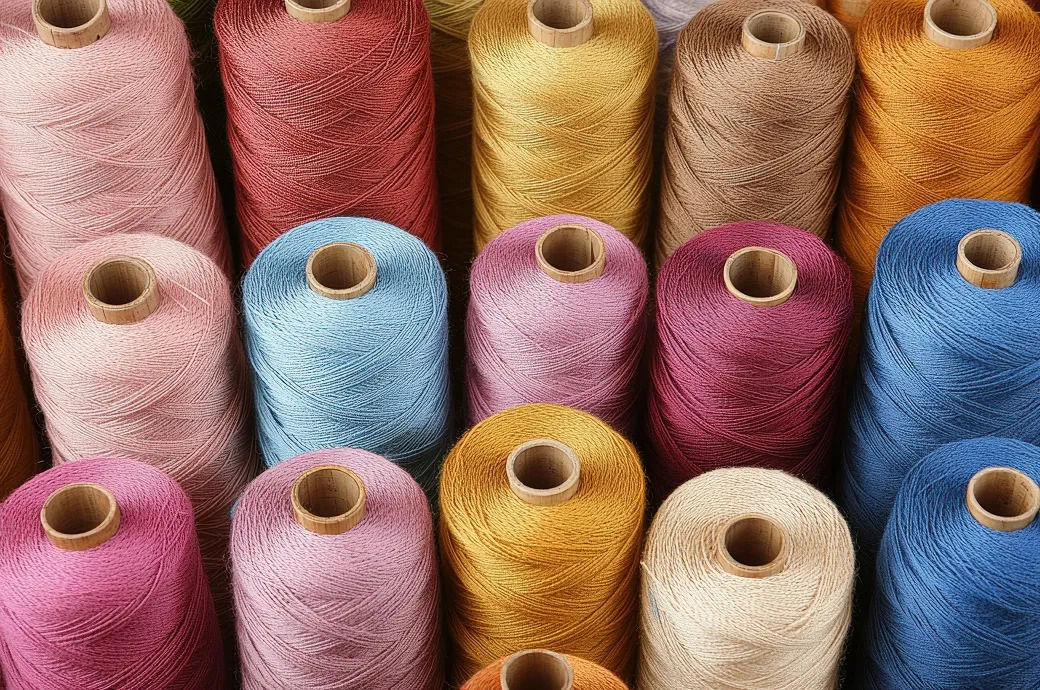
Bangladesh's yarn and textile manufacturing sector is facing a severe crisis, primarily due to a price gap between locally produced and cheaper imported yarn, particularly from India. This has led to a major slump in domestic sales and is threatening the existence of local textile mills, despite good domestic market. The core issues stem from a combination of unfavorable domestic policies, high operational costs, and the misuse of import privileges.
The vicious cycle imported vs. local yarn
A price gap has emerged between locally produced and imported yarn, making it economically unviable for garment manufacturers to source from domestic mills. This disparity is a direct result of government policies and market dynamics.
Table: Bangladesh and India yarn price difference
|
Yarn type |
Price per kg (approx. C&F Chattogram Port) |
Contributing factors to price |
|
Locally Spun 30-Count Yarn |
$2.95 - $3.05 |
High operational costs (expensive gas, high-interest bank loans), reduced government incentives (from 4% to 1%), and high duties on imported machinery. |
|
Indian 30-Count Yarn |
$2.68 - $2.72 |
Generous export incentives (RoDTEP, etc.), subsidies on electricity, capital, and labor, and alleged "dumping" practices. |
|
Price Gap |
$0.23 - $0.37 |
The substantial difference makes importing more profitable, as a saving of just $0.30 per kg makes a significant difference for large-scale garment manufacturers. |
The state of Bangladesh yarn sector
The repercussions of these challenges are evident in the operational struggles of Bangladesh's textile industry. The Bangladesh Textile Mills Association (BTMA) reports that local yarn sales have fallen by about 30 per cent from normal levels. This has forced mills to sell at a loss or at break-even, with over 50 factories having partially or fully shut down. Warehouses are overflowing with unsold stock, compelling some mills to store yarn inside factory floors.
Ironically the local textile industry has a substantial capacity. The Primary Textile Sector (PTS) meets approximately 85-90 per cent of the yarn demand for knitwear and 35-40 per cent for woven garments. The domestic textile and garment market is worth $12 billion annually, and local mills have the capacity to meet this entire demand. However, due to cheap imports and other issues, they only manage to sell about $7.5 billion of their products in the local market.
Textile mill owners claim that the issue has worsened due to the misuse of bonded warehouse facilities and the smuggling of yarn and fabric. They argue that huge amounts of illegal and untaxed yarn are being sold in the domestic market, further undercutting local mills.
Backward linkage and raw material reliance
Bangladesh's textile industry contributes over 13 per cent of the country's GDP, with the Ready-Made Garment (RMG) sector accounting for over 84 per cent of total export earnings. However, this growth is heavily reliant on imported raw materials. Bangladesh imports 97 per cent of its raw cotton, making the industry highly vulnerable to global price and currency fluctuations. Local mills meet approximately 85 per cent of the demand for knit fabrics but only 40 per cent for woven fabrics, with the rest being imported.
Meanwhile, Indian yarn imports continue to grow, tightening the squeeze on local producers.
Table: Bangladesh yarn imports
|
Data Point |
2024 |
2025 (January-July) |
|
Yarn Imports from India |
Rose by 41% |
Imports increased further |
|
Total Yarn Imports |
Reached a record $2.28 billion |
N/A |
|
Imported Yarn from India (by volume) |
340 million kg (47% of total imports) |
N/A |
|
Yarn imports from China (by volume) |
276.1 million kg (38% of total imports) |
N/A |
Data compiled from various sources including the National Board of Revenue (NBR) and the Bangladesh Textile Mills Association (BTMA).
The rise in yarn imports aligns with a broader increase in raw material imports for the RMG sector. Bangladesh Bank data shows double-digit growth in most textile-related import categories.
Table: Bangladesh textile related imports
|
Imported raw material |
FY 2024 ($ bn) |
FY 2025 ($ bn) |
YoY growth |
|
Total RMG Raw Materials |
$16.78 |
$18.44 |
+9.9% |
|
Raw Cotton |
$3.60 |
$3.46 |
-4.30% |
|
Yarn |
$3.21 |
$3.61 |
+12.3% |
|
Staple Fibre |
$1.39 |
$1.53 |
+10.0% |
|
Textiles and Related Articles |
$7.72 |
$8.69 |
+16.0% |
Data from Bangladesh Bank, Export Promotion Bureau
Thus the high dependence on imports and the struggle of the local manufacturing sector is a major challenge to Bangladesh's economic stability and its long-term goal of becoming a key player in the global apparel supply chain beyond being a low-cost manufacturer.
Mango has partnered with TextileGenesis to achieve end-to-end traceability for textile materials by leveraging cutting-edge digital technology
The partnership leverages TextileGenesis's platform to create a robust and verifiable digital record of the materials used in Mango's products.
Traditional textile supply chains are complex and opaque, making it difficult to verify the origin and sustainability claims of fibers (like organic cotton or recycled polyester). Mango is integrating the TextileGenesis platform to create a digital fingerprint for its preferred sustainable fibers, allowing the company to trace materials from the raw fiber stage through spinning, weaving, and final garment production. This initiative is crucial for Mango's long-term sustainability strategy, which aims to ensure all materials meet strict environmental and social criteria.
TextileGenesis uses proprietary technology to assign a unique digital ID, known as a ‘Fibercoin,’ to a batch of sustainable material (e.g., recycled cotton) at the very start of the supply chain (e.g., at the gin or recycler).
This Fibercoin travels digitally with the physical material through every transformation stage (spinning, dyeing, manufacturing), linking the finished garment on the shelf directly back to its verified origin. This system minimizes the risk of 'claim washing' or substituting conventional fibers for certified sustainable ones along the complex supply route.
Mango is initially focusing this partnership on tracing its strategic sustainable fibers including recycled polyester, recycled cotton, organic cotton and viscose. The brand joins other apparel makers adopting the TextileGenesis platform. This collective adoption aims to create a standardized, interoperable system for verifying sustainable claims across the entire industry, driving systemic change toward greater accountability.
As a major official partner and supplier, Adidas typically launches national team kits approximately six to nine months ahead of a major tournament like the FIFA World Cup. In November 2025, the brand launched these kits as the official home kits for the Adidas-sponsored nations participating in the tournament.
The overall design philosophy for the 2026 collection is reported to be centered on ‘United Cultures’ or ‘Host Heritage,’ incorporating design elements that subtly nod to the three host nations: the US, Canada, and Mexico. For the home kits, this usually translates into clean, classic designs with subtle, high-tech textures.
The kits feature the latest iteration of Adidas's Heat.RDY technology, designed to manage moisture and optimize air flow, ensuring athletes remain cool and dry in the varied summer climates of the host cities.
The brand moved further toward premium, lightweight application, utilizing 3D printed rubber crests and specialized silicone logos to reduce weight and minimize friction.
The entire collection is promoted as being made with 100 per cent recycled polyester, supporting Adidas’s commitment to end plastic waste
Ralph Lauren raised its annual revenue forecast after exceeding quarterly estimates, driven by resilient consumer demand for its high-priced polo shirts and cotton cable knit sweaters, even amid rising economic uncertainty. The company now projects full-year revenue to increase by 5 per cent-7 per cent on a constant currency basis, a significant increase from its previous forecast of low- to mid-single-digit percentage growth.
The company reported quarterly revenue of $2.01 billion, comfortably beating analysts’ estimates of $1.89 billion, according to data compiled by LSEG. Following the news, shares of the company rose approximately 1 per cent in premarket trading.
The luxury brand saw robust growth across key geographies. Their Q2,FY26 revenue from North America increased by 13 per cent, while its revenue in Europe was up by 22 per cent. The strongest growth came from China, where revenue soared by over 30 per cent during the quarter.
The owner of several high-end apparel and accessory brands continues to see strong sales across its entire portfolio despite selectively raising prices. This success is primarily attributed to the solid loyalty of its affluent customer base. Furthermore, Ralph Lauren's investments in innovation and marketing have successfully helped the brand win over younger shoppers who seek fresh and trendy styles. The brand’s visibility among consumers has been further boosted by celebrities such as Taylor Swift and Selena Gomez wearing its designs at recent high-profile events.

